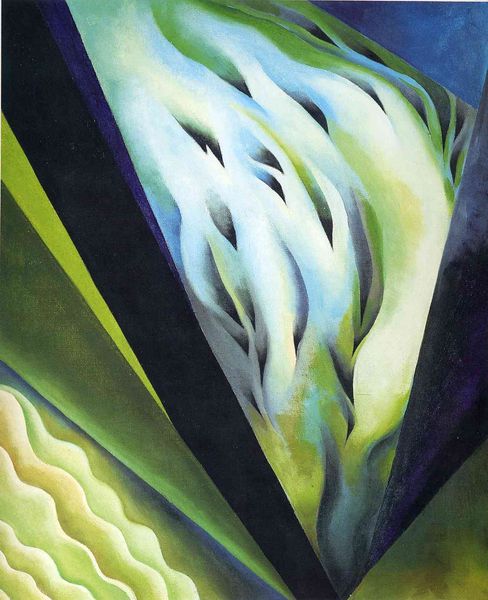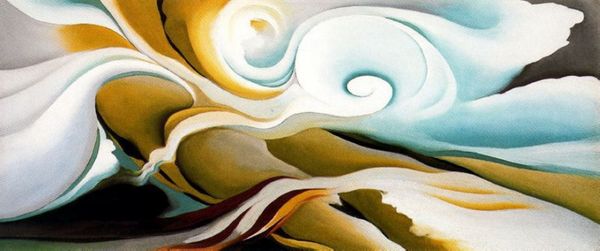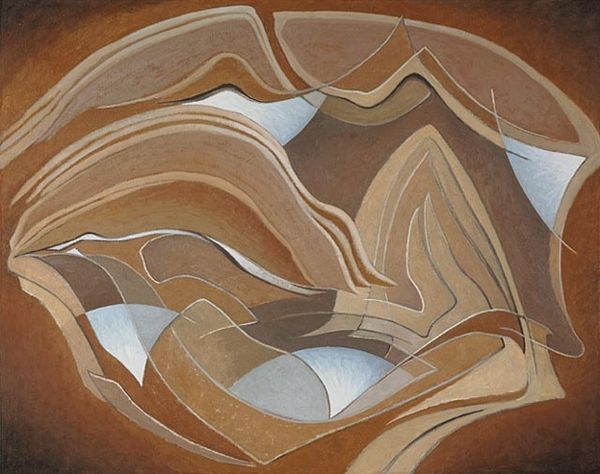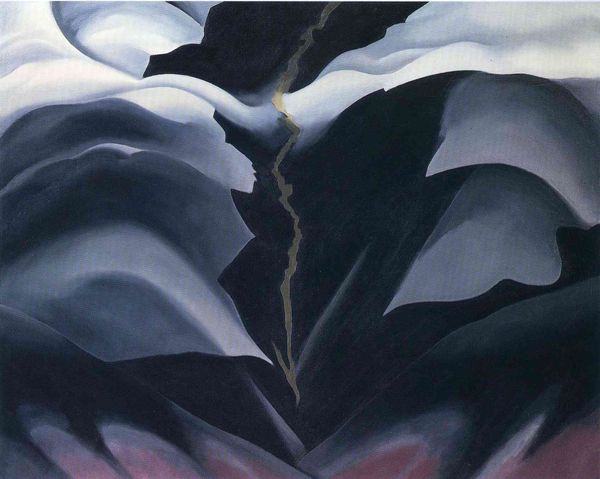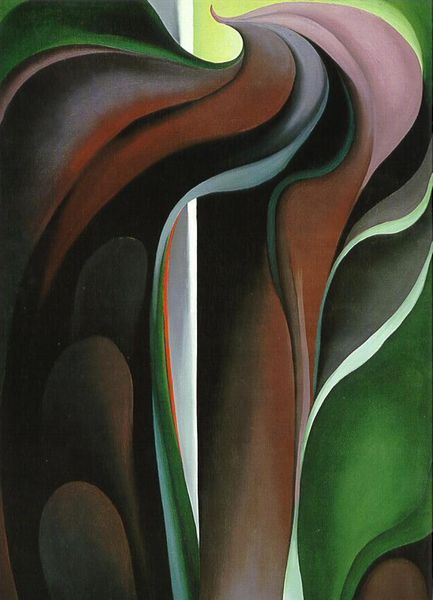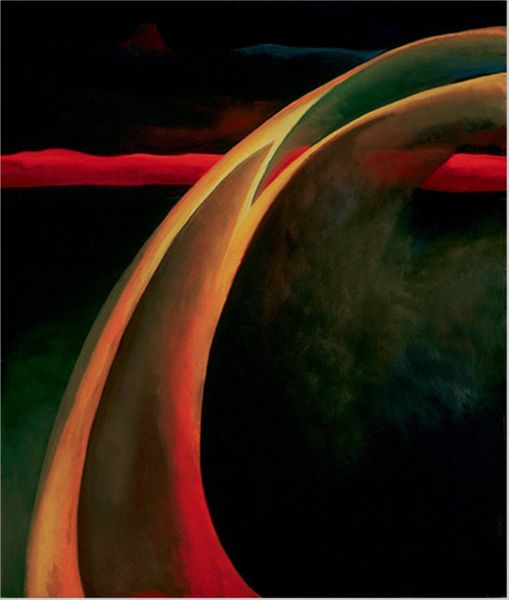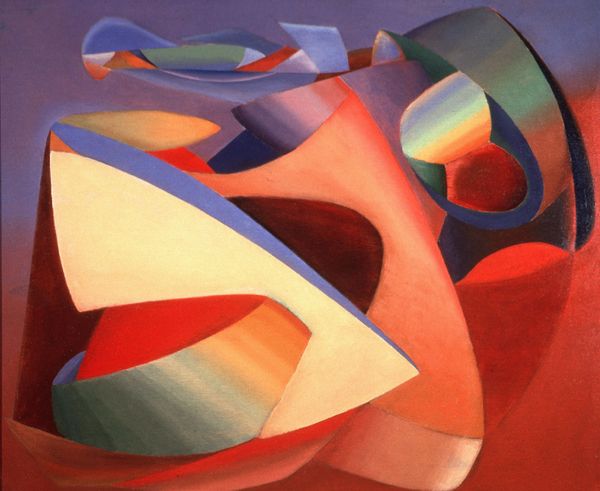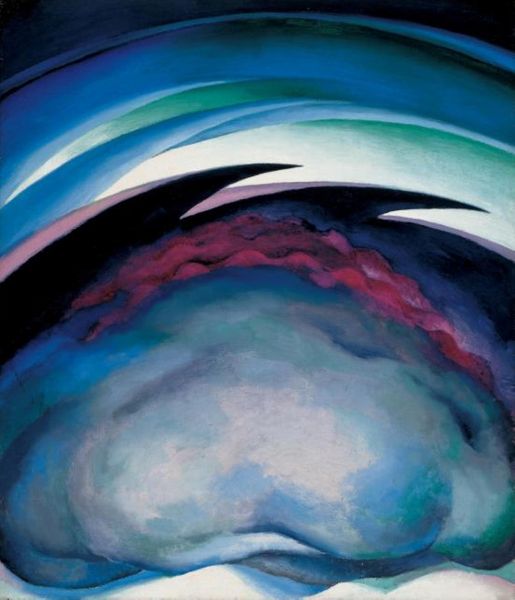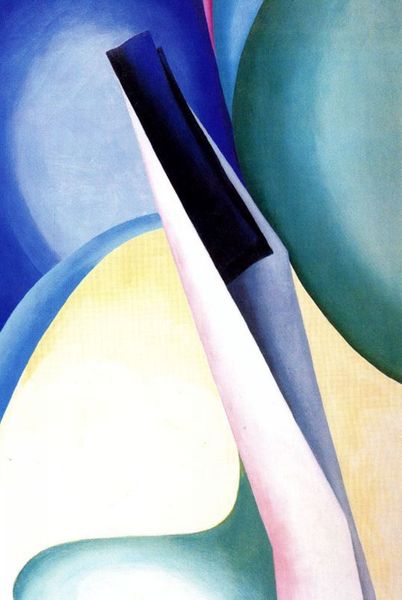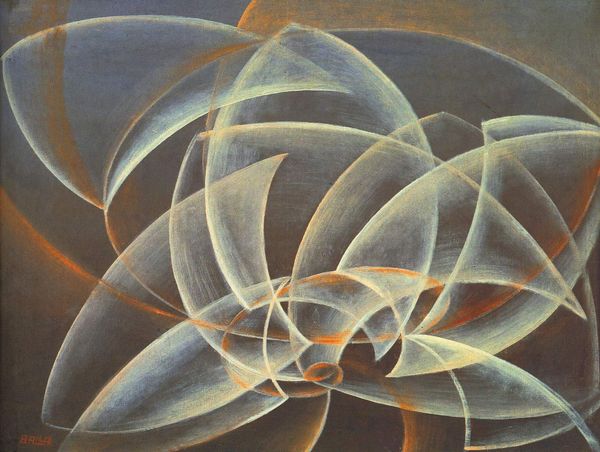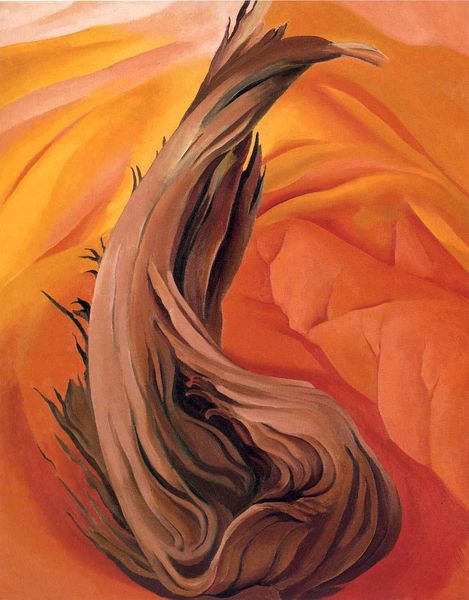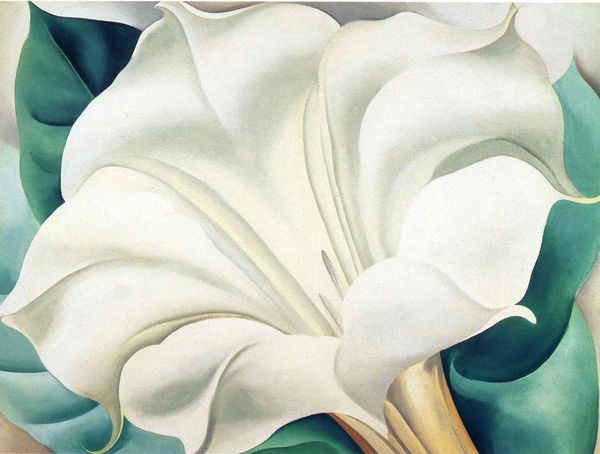
painting, oil-paint
#
painting
#
oil-paint
#
landscape
#
oil painting
#
abstraction
#
modernism
Copyright: Georgia O'Keeffe,Fair Use
Editor: We're looking at Georgia O'Keeffe's "From the Lake," painted in 1924 using oil on canvas. I find its curving forms both calming and slightly unsettling. How do you interpret this work? Curator: O'Keeffe’s "From the Lake" speaks to me about the negotiation between the personal and the political within a modernist landscape. Consider the timing: 1924, just after women in the US secured the right to vote, yet still faced enormous societal constraints. What looks like serene abstraction to some might be O’Keeffe staking a claim to her own vision, defying a patriarchal art world. Do you notice how the sensuous, almost tactile forms seem to push against any fixed interpretation? Editor: I do. It's not a literal depiction of a lake, but it evokes the feeling of water, sky, and earth. Curator: Exactly. It’s representational but highly abstracted, pushing against the traditional landscape genre. Some have suggested these curving forms evoke the female body, connecting O'Keeffe to feminist readings. The darkness at the top and bottom—do you see it as constricting the flowing curves? It's as if she's subtly hinting at the limitations placed on women, even amidst a celebration of natural forms. Editor: I hadn't thought of that restriction before, but now I see it. So the abstraction isn't just about aesthetics; it’s a veiled commentary? Curator: Precisely. It becomes a powerful strategy for addressing social issues through a language of form and color. It invites us to question the surface, and delve into the layered realities beneath. What’s your take away? Editor: It makes me consider how even seemingly ‘pure’ artistic expressions are interwoven with the artist’s social and political reality. I thought it was beautiful, now I find it strong.
Comments
No comments
Be the first to comment and join the conversation on the ultimate creative platform.
